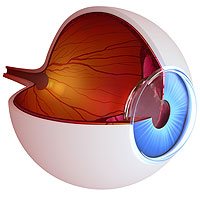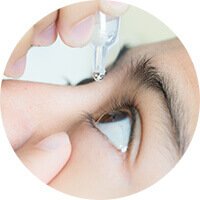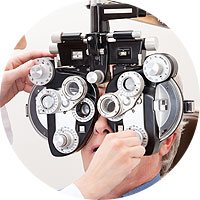Blepharoplasty, also referred to as eyelid surgery or an eyelid lift, is a surgical procedure that removes excess skin, fat, and muscle from the eyelids. It can be performed on the upper and lower lids for cosmetic or functional reasons.
Like any procedure, blepharoplasty may not be suitable for everyone. Keep reading to find out whether you may be a good candidate for blepharoplasty!
1. You Have Droopy Eyelids

When your eyelids are droopy, it can have a significant impact on your appearance. They can make you look fatigued and aged beyond your actual years.
Droopy eyelids are a common part of aging, but factors like a genetic predisposition may also cause them to occur at a younger age. Blepharoplasty is most often performed on those in their thirties and forties, but anyone older than eighteen can choose to undergo this procedure.
With an upper lid blepharoplasty, you can gain a more lifted appearance. The removal of excess skin and fat will open up your eye area, and with the sagging gone, you will look more rejuvenated.
2. You Have Under-Eye Bags
Some people have under-eye bags, no matter how well-rested they may feel. Under-eye bags are a common concern many individuals try to cover up or treat using creams and other products.
However, blepharoplasty can be far more effective in addressing the source of puffiness below the eyes. A lower lid blepharoplasty removes and repositions fatty tissue to reduce the appearance of bags under the eyes.
To perform the procedure, a small incision is made on the inner surface of the eyelid or outside, just below the lash line. Either way, scarring will be invisible or hardly noticeable.
After your procedure, the area under your eyes will look brighter, giving you a more refreshed appearance.
3. You Find It Hard to See Due to Sagging Skin
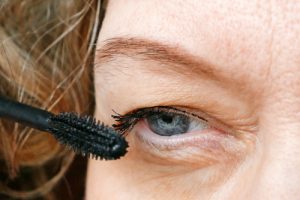
While blepharoplasty is a popular option for enhancing your cosmetic appearance, it may also be performed for medical reasons. Skin can hang low enough to encroach upon your field of vision.
Some patients with sagging eyelids encounter visual challenges, especially when the skin extends over the pupil. When the eye drops below the pupil, you may tilt your head back in an effort to see better.
For these individuals, blepharoplasty can help restore their ability to see clearly. It will remove the excess skin that is getting in the way of their vision.
In some cases, an issue with the eyelid muscles causes the eyelid to droop and interfere with vision. If your eyelid muscles are causing drooping, your eye doctor can combine ptosis repair surgery and blepharoplasty to give you the best outcome.
When deemed medically essential due to the impact on vision, certain insurance policies may provide coverage for the procedure. Your doctor may order additional testing to help determine coverage.
4. You Have Good Eye Health and Overall Health
To be a good candidate for blepharoplasty, your eyes should be generally healthy. If you have certain eye conditions, like glaucoma, or an active eye infection, blepharoplasty may not be suitable for you. Be sure to discuss all relevant eye conditions with your doctor during the consultation.
You should maintain good overall health. Your general health also plays a pivotal role in ensuring an optimal outcome.
Some conditions, such as diabetes, can impede the body’s natural healing processes. Certain medications can have a similar effect.
It is also important that you are not a smoker. Because it hinders the flow of oxygen and nutrients, smoking can delay healing from procedures like blepharoplasty.
5. You Can Take Some Time Off Work to Recover
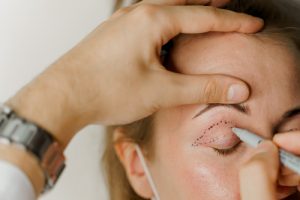
Blepharoplasty does include a recovery period. While most patients can return to most normal activities within a couple of weeks, you should plan to keep your schedule clear for at least a few days after your surgery.
Most patients feel comfortable enough to resume working at that point. If you are having surgery, you should also make arrangements for someone else to drive you home, as your vision will be blurry at first.
Other side effects, such as bruising, swelling, and discomfort, are normal as well. They usually go away after several days.
For at least a week after blepharoplasty, you should avoid strenuous activities. Such activities can increase swelling and inflammation.
If you are not able to make these accommodations in your schedule, blepharoplasty may not be the best fit for you.
Any time you are getting a procedure, it’s important that you understand what it can achieve. That way, you are more likely to be satisfied with your results.
While blepharoplasty can make a significant difference in your eyelids, both for cosmetic and functional reasons, you should still have realistic expectations. You should have a complete understanding of the potential outcomes, side effects, and complications.
If you are unsure about any part of the procedure, or need clarity on what kind of outcome you can expect, talk to your eye doctor. They will be able to discuss your specific goals and whether blepharoplasty may be able to accomplish your goals during your blepharoplasty consultation.
Are you experiencing droopy eyelids? Schedule a blepharoplasty consultation at Eye Care Specialists in Kingston or Hazleton, PA, today!












